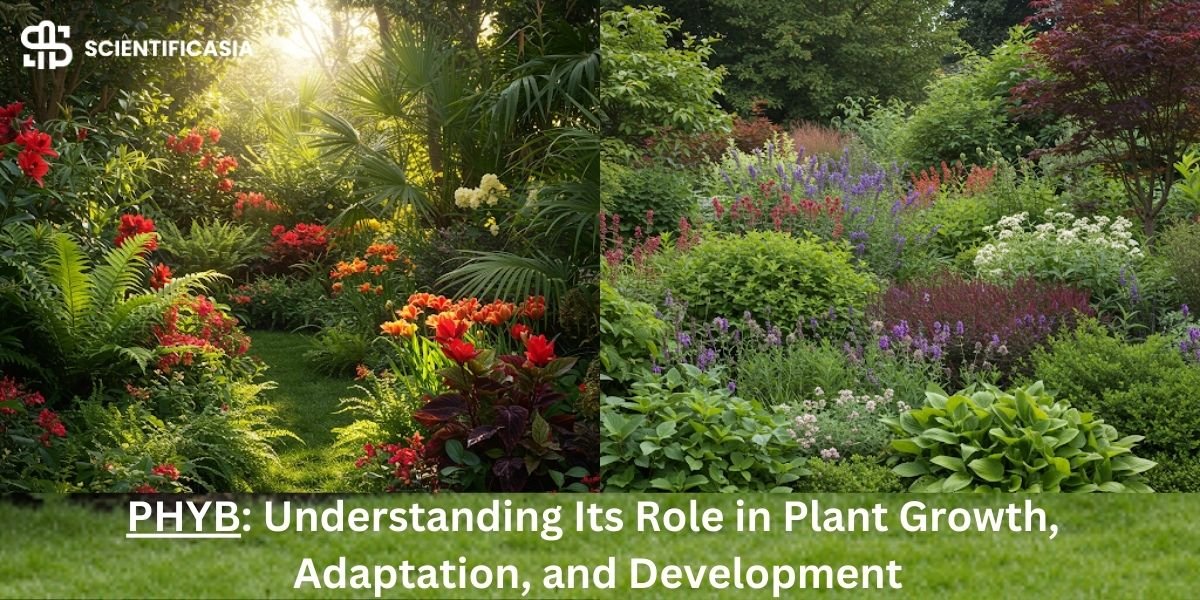Phytochrome is predominantly found in plant leaves and consists of a protein with a bilin chromophore. It is present in most plants and even some bacteria, with a related bacterial version having a solved protein structure.
Arabidopsis thaliana, a model plant, possesses genes for five phytochromes. Researchers are exploring whether these phytochromes serve unique or overlapping purposes. They compared phyA and phyB mutants to the wild type in their tests. Intriguingly, both mutants displayed germination issues: phyA in far-red light and phyB in the dark. Interestingly, the inhibitory and stimulatory effects on germination were observed when the phyA mutation in far-red light was suppressed by a phyB mutation.
In red light, the phyA phyB double mutant showed underdeveloped cotyledons, reduced CAB gene expression, and weaker chlorophyll induction. The role of PHYA in sensing day length for flowering response was highlighted, while PHYB played a role in early flowering under certain conditions. Thus, PHYA and PHYB work in harmony to regulate germination, seedling growth, and flowering.
In this article, we will explore Phytochrome B (PhyB) as a specific type of phytochrome and examine recent research developments in its function and applications.
What is Phytochrome B (phyB)?
Phytochrome B (phyB) is a light-sensing molecule in plants that creates a specialized structure called a photobody, even though its exact makeup is not completely understood. Phytochrome B functions as a key regulator in plant development, allowing plants to adapt their growth strategies based on light conditions.
When this protein detects red or far-red light, it undergoes structural changes that trigger various signaling pathways. This mechanism enables plants to optimize their growth, control seed germination, regulate flowering, and even enhance stress tolerance in response to environmental changes.
Recent Research on Phytochrome B (phyB)
Seed Germination
Recent studies have highlighted how PHYB interacts with other proteins to regulate seed germination. It has been found that PHYB plays a crucial role in responding to fluctuating light conditions, ensuring optimal germination timing. Additionally, new findings suggest that PHYB works in tandem with other photoreceptors to fine-tune germination in different environmental conditions.
Plant Adaptation to Environmental Changes
PHYB is instrumental in helping plants adapt to changing environmental conditions such as drought, high temperatures, and fluctuating light levels. Research shows that PHYB-mediated light perception can trigger stress response pathways, thereby increasing plant resilience against climate-related stresses.
Role in Flowering Regulation
New research has revealed that PHYB interacts with multiple signaling pathways to regulate flowering time. By modulating hormonal balances and genetic expression, PHYB influences when a plant transitions from vegetative growth to flowering. This discovery has significant applications in agriculture, where controlling flowering time can enhance crop yields.
New Applications and Case Studies
Agriculture
Understanding PHYB’s role in plant growth and development is being leveraged to improve crop yields and quality. By manipulating light exposure and PHYB pathways, researchers aim to develop crops that grow efficiently under varying climatic conditions.
Forestry
Studies indicate that PHYB can be used to manage forest ecosystems and promote biodiversity. By controlling seed germination and growth patterns, PHYB-based strategies can enhance afforestation efforts and combat deforestation effects.
Environmental Science
PHYB is being explored as a tool to study the impact of climate change on plant development. Scientists are investigating how alterations in light spectra caused by atmospheric changes affect PHYB function, thereby influencing plant ecology and evolution.
Phytochrome B (phyB) Function During Plant Adaptation
Thermotolerance
Plants face challenges when exposed to extreme temperatures, affecting growth and survival. To adapt, plants have evolved thermal adaptive mechanisms. Recent studies suggest a connection between light signaling and heat responses, with PHYB playing a significant role in heat acclimation. Light priming, a pre-exposure to light, enhances thermotolerance, as PHYB activates the expression of genes that counteract reactive oxygen species (ROS) accumulation at high temperatures.
Interestingly, plant thermotolerance varies based on the red-to-far-red light ratio (R/FR ratio). A low R/FR ratio enhances thermotolerance, possibly due to PHYB stock and PIF transcription factors’ interplay. PIF activity is induced under shade conditions, reducing fatty acid desaturation and increasing thermotolerance.
Cold Tolerance
Cold temperatures can harm plants, leading to growth issues and even death. Molecular genetic research has identified key elements involved in sensing and signaling cold temperatures. The CBF-COLD-COR regulon is well-studied, where CBF transcription factors quickly induce COR gene expression. Osmoprotection, lipid metabolism, cell wall changes, and growth hormone signaling are all supported by the products encoded by COR genes.
Cold shocks often align with light-dark cycles, prompting the connection between light signaling and cold responses. Evidence shows shared signaling mediators and regulatory mechanisms between light and cold acclimation. Photoperiods affect cold tolerance development; short days (SDs) increase cold tolerance compared to long days (LDs). PIF4 and PIF7 gene expression rise under LDs, and these PIF factors suppress CBF genes. Notably, phyB deficiency disrupts this photoperiod-controlled cold tolerance.
R/FR light ratio is vital for cold tolerance; a high R/FR ratio decreases cold tolerance, especially in PHYB-dependent manners. In Arabidopsis, PHYB influences PIF7, which inhibits CBF gene expression. This indicates that the interplay between PHYB Pr and Pfr forms acts as a molecular switch integrating light signals into cold tolerance development.
Evolutionary Significance of Phytochrome B (phyB)
PHYB has played a crucial role in plant evolution by helping plants adapt to changing light environments over millions of years. This ability has enabled plants to thrive in diverse ecosystems, from dense forests with limited light penetration to open fields with abundant sunlight. The evolutionary history of PHYB highlights its importance in shaping modern plant species.
Future Research Directions
Despite significant advancements, several questions remain about PHYB’s full range of functions. Future research aims to explore:
- How PHYB interacts with other photoreceptors and signaling molecules at the molecular level.
- The potential of PHYB manipulation to develop stress-resistant crops.
- The role of PHYB in plants’ adaptation to urban and artificial lighting environments.
Conclusion
In the domain of plant science, Phytochrome B (phyB) emerges as a pivotal regulator orchestrating responses across the plant life cycle. From seed germination to flowering and environmental adaptation, PHYB’s ability to sense and respond to red and far-red light allows plants to optimize growth, survival, and resilience. As research continues, the insights gained from PHYB studies could revolutionize agriculture, forestry, and environmental science, offering new strategies for sustainable plant development in an ever-changing world.
















